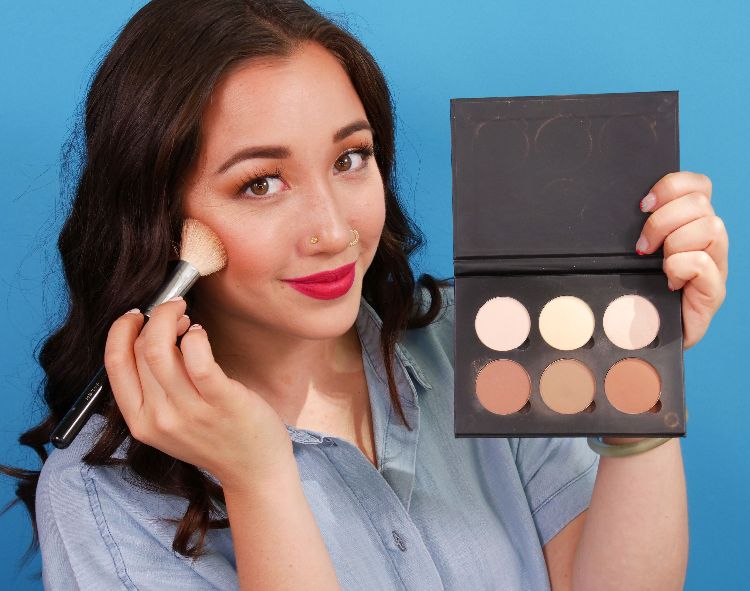The art of contouring is just that -- an art. The concept has been around forever, and makeup pros know that a well-placed contour can hide flaws and visually reshape your features. The keys to successful contouring include color choice, shade placement and blending -- lots and lots of blending.
In our short tutorial, we'll show you some common mistakes and give you tips on how to avoid them. These techniques apply to powder or cream contouring products, and they can make a huge difference in the end result when used carefully. Ready to learn more? Watch our video, and then review the summary below.
Advertisement
Mistake #1: Contour shade is too dark
Dark shades can be very difficult to blend fully and can flatten out the cheek area. Opt for the lightest neutral contour shade in your palette and build up if necessary by working the color into your skin in small circular motions. Be sure to check your makeup in natural lighting (by a window) to make sure the color is right. Tip: Avoid applying too much on the jawbone because it can end up looking like facial hair.
Dark shades can be very difficult to blend fully and can flatten out the cheek area. Opt for the lightest neutral contour shade in your palette and build up if necessary by working the color into your skin in small circular motions. Be sure to check your makeup in natural lighting (by a window) to make sure the color is right. Tip: Avoid applying too much on the jawbone because it can end up looking like facial hair.
Mistake #2: Contour is placed too far below the cheekbone
If you have trouble getting your contour in the right place, use a makeup pencil or your brush handle as a guide. Apply your contour just below the cheekbone, then blend the color upward instead of toward your jaw. This will keep the color in the hollow below your cheek.
If you have trouble getting your contour in the right place, use a makeup pencil or your brush handle as a guide. Apply your contour just below the cheekbone, then blend the color upward instead of toward your jaw. This will keep the color in the hollow below your cheek.
Mistake #3: Forehead appears short
If your contour extends too far down your forehead, it can make your face look unbalanced. Start by contouring just the outer corners of your forehead in small circular motions; keep the color close to your natural hairline.
If your contour extends too far down your forehead, it can make your face look unbalanced. Start by contouring just the outer corners of your forehead in small circular motions; keep the color close to your natural hairline.
Mistake #4: Nose contouring looks unnatural
When drawing your contour lines on the sides of your nose, be careful where you place them. If they're too close together, your face can look pinched and unnatural. The same is true if you put them too far out. In that case, your nose may actually look wider. Tip: Be sure to use a small fluffy brush to blend the contour and work from the side upward toward the center of your nose. This keeps you from dragging color down onto the sides.
When drawing your contour lines on the sides of your nose, be careful where you place them. If they're too close together, your face can look pinched and unnatural. The same is true if you put them too far out. In that case, your nose may actually look wider. Tip: Be sure to use a small fluffy brush to blend the contour and work from the side upward toward the center of your nose. This keeps you from dragging color down onto the sides.
Remember, you can always deepen your contour if needed, but it's difficult to work it in if you've applied it with a heavy hand.
Stay pretty!

Fierce League
Advertisement
